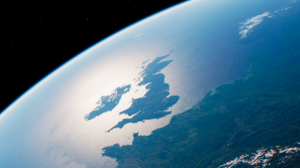

Seventy per cent of the earth’s surface is water - oceans and seas – representing a vast, untapped resource of clean, renewable energy.
If we were to exploit it, and export all that energy, it would provide us with almost 30,000 terawatt hours – over 150 per cent of the world’s energy demand, meeting current energy demand plus half again, according to Professor Henry Jeffrey, head of the Policy and Innovation Group in the University of Edinburgh’s Institute for Energy Systems (IES).
Balancing the books and the grids
We are beginning to exploit offshore wind, says Professor Jeffrey, but tidal, and particularly wave, technology is further behind. However, modelling done by the IES shows that a high-ambition UK strategy of investing in the supply chain and skills required for offshore renewables could generate almost £80bn for the economy.

Professor Jeffrey says: “Just wave and tidal could contribute £40bn – that’s bigger than the UK telecoms industry, or our car manufacturing. It could generate 50,000 jobs by 2050, mainly in coastal areas, where depopulation is an issue. These would be high-quality jobs contributing, alongside the move away from oil and gas, to a just transition to net zero in this country.”
Wave and tidal energy can also help balance the energy grids. Renewables currently struggle to meet seasonal demand, because we only have solar power in the summer, when demand is low. Wave energy is strongest in winter, when demand is high, and supplements wind – also most plentiful in winter. Tidal energy is constant throughout the seasons – despite its ebb and flow – completing a picture that allows renewables to meet yearly demand.

Innovation in offshore renewables
Scotland is leading the way in developing tidal and wave technology, says Jeffrey. A collaboration between the University of Edinburgh and Orbital Marine Power is one example of emerging tidal technology, which could power 2000 Scottish homes per device once deployed. Similarly, Nova Innovation, currently being tested, could help decarbonise Shetland’s energy system.
University of Edinburgh startup Mocean Energy is developing technology to harness wave energy, supported by seed funding from the University’s venture capital fund Old College Capital earlier this year.
The University of Edinburgh is also home to world-leading, innovative testing facilities. In a partnership between the University and large-scale manufacturer Babcock, FastBlade provides the world’s first tidal blade testing site at Rosyth docks, part of the Arrol Gibb Innovation Campus.
And FloWave situated at Edinburgh’s King’s Buildings, is the most sophisticated test tank in the world for testing wave and tidal devices.
The IES Policy and Innovation Group works with technology developers and governments at home and abroad to ensure a favourable policy environment for the oceans energy sector – to enable the right investment in supply chains and skills, and industry-focussed research that can help the renewables sector meet year-long energy demand, whilst boosting the UK economy and allowing a just transition to net zero.
Contact Andrew Aveyard to find out how you can work with the University of Edinburgh’s world-class ocean energy expertise and state-of-the-art facilities that will provide the solution to your research questions.
Professor Henry Jeffrey, School of Engineering.



Header Image Credit: chrisjmitchell via stock.adobe.com